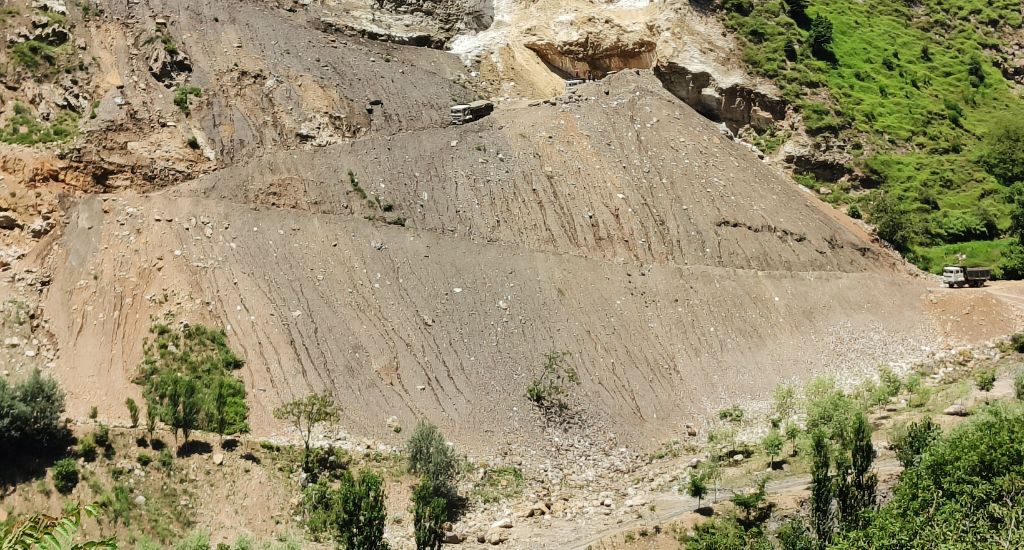
Gypsum jam: Rampant mining troubles Kashmir villagers
Villagers in Baramulla district of Jammu and Kashmir continue to suffer from health issues related to air and noise pollution even as complaints to officials against gypsum mining lie unattended.

Villagers in Baramulla district of Jammu and Kashmir continue to suffer from health issues related to air and noise pollution even as complaints to officials against gypsum mining lie unattended.
Aiyaz Farooq, 36, of Bagna Salamabad village in Jammu and Kashmir’s Baramulla district has been fighting for the last few years to stop the gypsum mining going on in his area.
This mountainous region is rich in gypsum reserves. Bagna Salamabad, Farooq’s village that’s home to over 1,000 households, has 12 mines in its vicinity.
The mines are adversely affecting the people in nearby villages, causing a range of health problems related to air and noise pollution.
About 30 percent of the people in Salamabad Dachina, a village that lies close to Bagna Salamabad, suffer from tuberculosis, said Ali Mohd Naik, 34, a local resident. “Many complain of chest-related disorders,” he said.
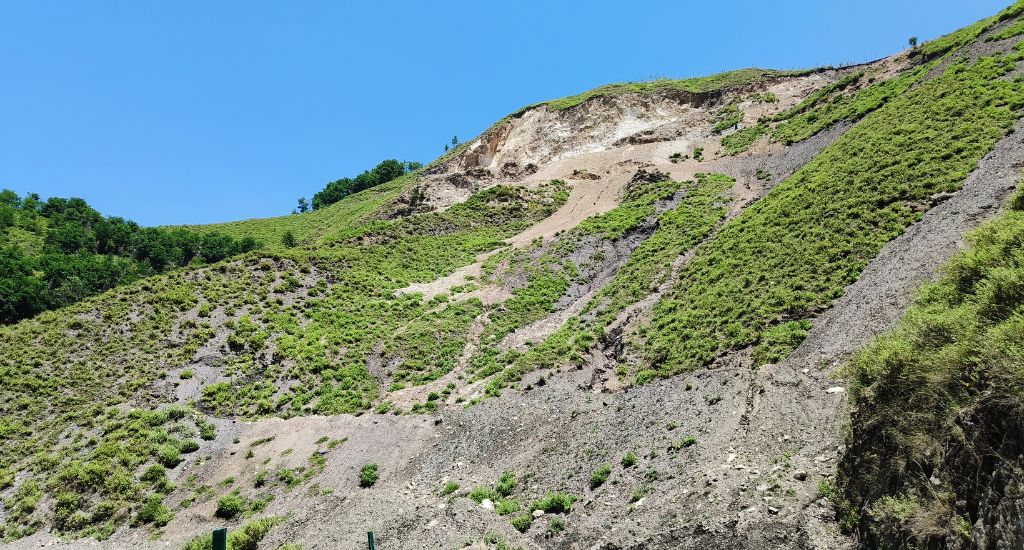
As per data collected from the primary health centre at Boniyar, 55 cases of tuberculosis have been reported from Bagna Salamabad and adjoining areas.
“There is a rise in respiratory ailments due to gypsum mining and our hospital receives many such cases,” said Khurshid Ahmad Khan, the block medical officer of Boniyar. “There may be other lung ailments caused by environmental pollution.”
Wastewater from mining is another polluting factor.
“We often consume contaminated water since gypsum from the mountains gets mixed with it,” said Mushtaq Ahmad, another villager.
People also complain that they cannot sleep because of the noise pollution since dumpers and earth movers are operated at night.
In a report submitted to the Deputy Commissioner of Baramulla in September 2022, the then sub-divisional magistrate had suggested, “Since all the 12 mining units fall within 1 km of Lachipora Wildlife Sanctuary… the same be closed down.”
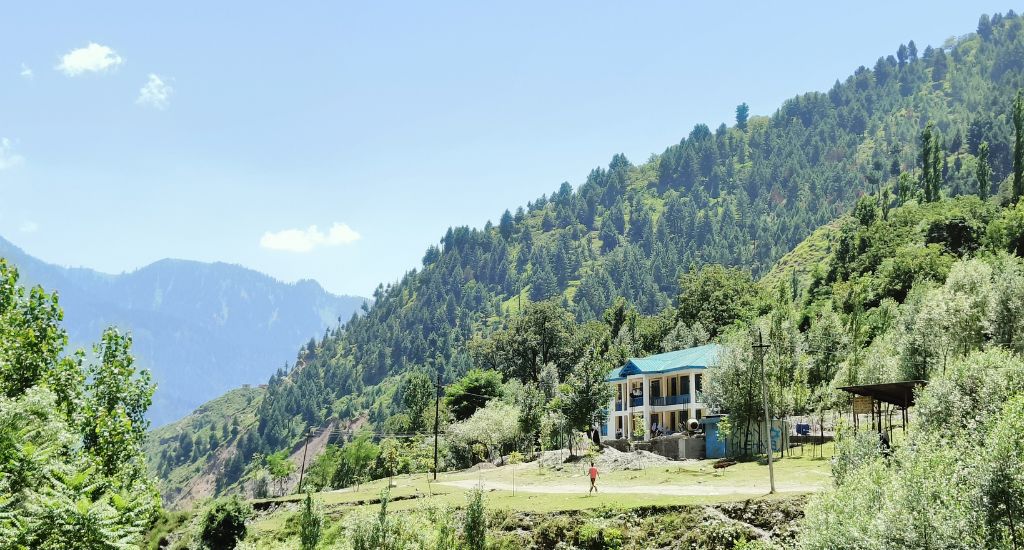
In June 2022 the Supreme Court had ruled that no mining activity should be allowed in wildlife sanctuaries and national parks, and that mining can take place only beyond the 1 km eco-sensitive zone (ESZ). But the ground reality is different.
Of the 15 listed leased out gypsum mines, four fall fully or partly within the limits of protected Lachipora Wildlife Sanctuary, while one is located within the eco-sensitive zone (ESZ), as per the report. Only the gypsum mine in Salamabad Dachina is outside the ESZ.
Khursheed Ahmad Mir, a local politician, pointed out that the mining activity poses a threat to the sanctuary, which is home to the markhor or wild goat that is near threatened as per the Red List of International Union for Conservation of Nature.
“The sanctuary falls within 1 km of the mines. Legally, the miners should not extract gypsum. This poses a serious threat to wild animals and will affect their habitat,” he said.
Sharing the same view, Altaf Koul, the range officer of Baramulla Wildlife Department, said, “Deer and markhors can become extinct if this situation continues. Flora and fauna in the area are suffering badly. We want to put a ban on this mining.”
The matter is now under the review of the Jammu & Kashmir and Ladakh High Court.
“The court has given a deadline of August 2023 to the wildlife department to demarcate the sanctuary’s boundary walls. Only after that can a call be taken,” Sarfraz Shaban, District Mineral Officer, Baramulla, said.
Mine lease holders say that mining is being done legally, and the operations also generate employment for the local people.
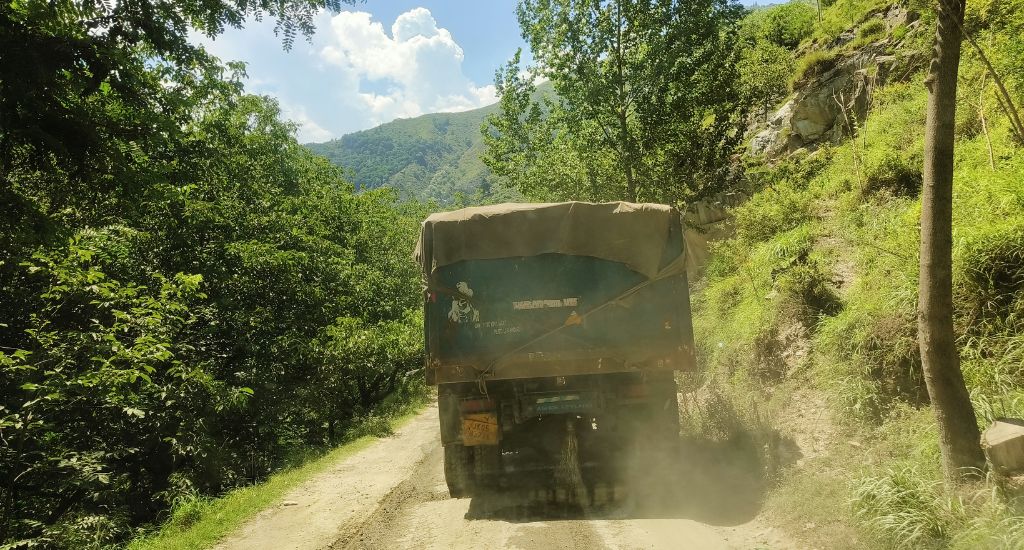
“We have all the documents. We generate employment for the locals and revenue for the government,” Iqbal Shah, a miner, said. “If it’s proved that we are extracting gypsum at the wrong place, we will stop. We respect the Supreme Court’s guidelines.”
Mohd Ismail Khan, a member of the District Development Council (DDC) – an elected local governance body – of Boniyar, said that about 50 people are involved in the mining work.
“There are no tuberculosis cases here. Some people are triggering rumours for their personal interests. We have to develop our village as an industrial area,” said Khan, whose dumper is involved in the mining business.
Farooq, however, pointed out that only 2 percent of the villagers are involved in this occupation but everyone is suffering.
The local residents also say that the roads have been badly damaged because of the movement of heavy vehicles, and blame the DDC for failing to provide tar roads.
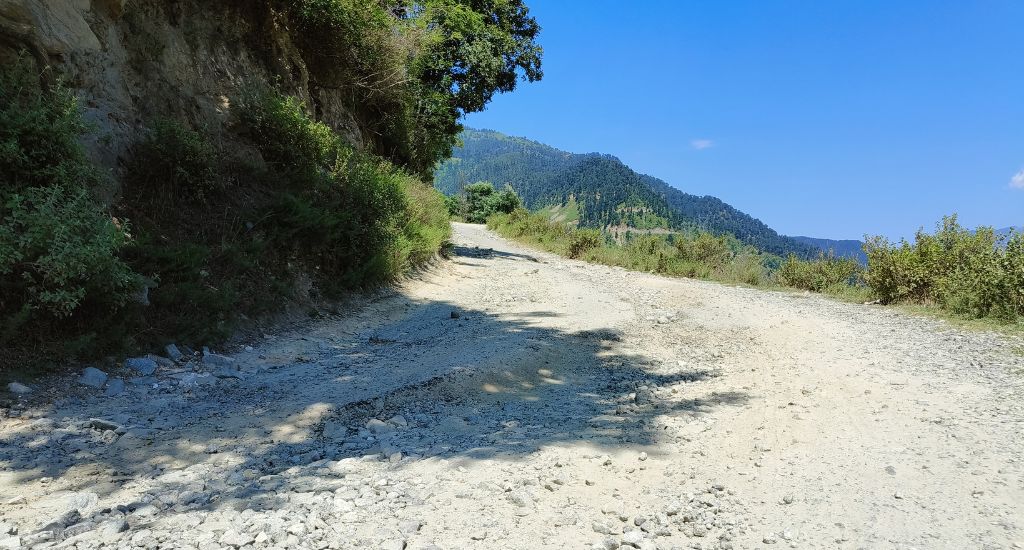
The deforestation caused by mining also leads to landslides during rains, said Mushtaq Ahmad, another villager.
Some villagers said that their houses have developed cracks on the walls, and that their crop yield has decreased.
At a government school which is located within 500 metres of the mines, teachers said that the dust and noise affect the students’ education.
“We demand a complete ban on the extraction of gypsum as our lives are at risk,” said Naik.
Jatin Kishore, SDM Uri, said that the matter is sub-judice.
According to Farooq, they have apprised the office of J&K lieutenant governor of the pollution and health impact but there has been no response yet. He has also written to senior department officials concerned but nothing has been done so far.
Also Read | Kashmir’s walnut wonders
The lead image at the top shows gypsum being extracted from a mountain in Bagna Salamabad area, and dumpers moving with the mined material. (Photo by Idrees Bukhtiyar).
Idrees Bukhtiyar is an independent journalist based in Jammu and Kashmir.